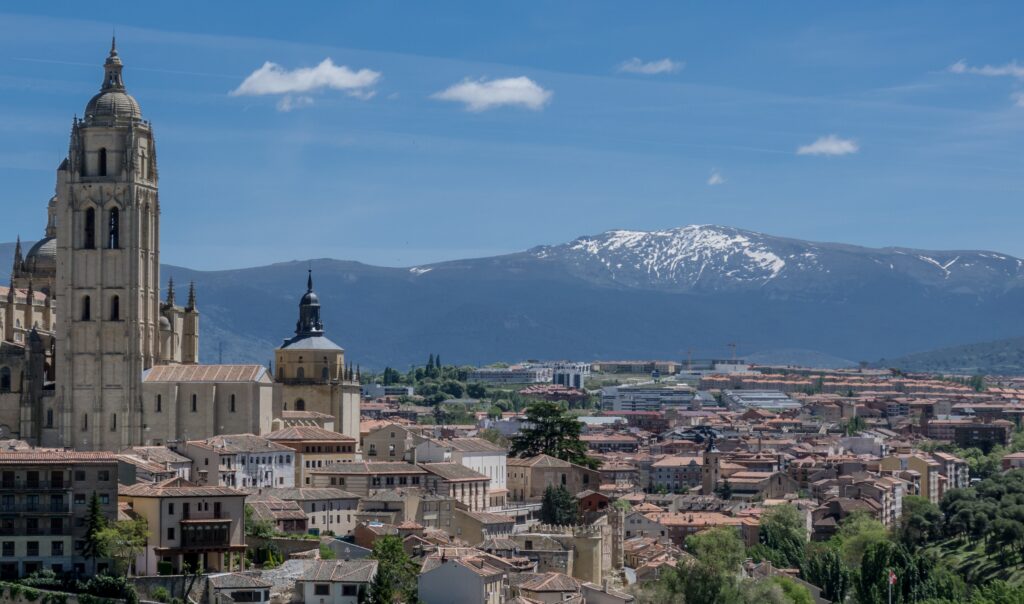The rumblings a few months ago turned to be true, the Spanish Grand Prix is really going to go to Madrid. A ten-year deal to host the event was announced earlier today (January 23, 2024) and let’s say it elicited a reaction from fans. Even though the first race won’t be held until 2026, it’s generating a lot of news and commentary from fans all over the world.

Credit: Farrokh Bulsara
Public Domain
While FOM, the teams, and accredited media greeted the news with enthusiasm; fans were a bit more…skeptical. The proposed circuit will be comprised primarily of roads around the IFEMA Exhibition Centre near the airport. Although it will have some purpose-built sections, it is still another street circuit on a calendar increasing comprised of street circuits. This more than anything else is what I think is driving the overall negative fan reaction.
The Circuit de Barcelona-Catalunya has been the site of the Spanish Grand Prix since 1991 and has also been a popular testing venue due to it’s layout. For many years though fans complained that the racing at Barcelona was boring with few passes. Teams also tended to qualify side by side since the layout was so well-known. Everybody had a lot of data on the track which enabled teams to setup their cars well but also sometimes led to processional racing. But losing the race has fans speaking out in favor of the track and against the announced change of venue.
I’ll comment on the trend towards street races in due course but for now, I want to focus on this particular event. The truth is that the Spanish Grand Prix has been a decent event but lately has been overshadowed by new venues like Singapore. Plus, the return of tracks like Zandvoort and Spielberg have brought fans back to those classic, albeit modified, circuits. Attendance is good but not as good as other tracks on the calendar like Silverstone, Monza, and Spa. Plus, the MotoGP race generates a lot more attendance and passion. In other words, Barcelona is a decent event but not spectacular.
Plus, money is a factor on all sides. Liberty Media wants to continue generating revenue, so do the teams. Increasingly, cities want to attract popular sporting events to increase tourism and its associated revenue streams. F1 is one such sport that is now garnering more attention than in years past, hence the increased interest in hosting events. The idea is that rather than bringing people to a track out in the boonies, you bring the track to the fans. Montreal and Melbourne were the initial models for this but when Singapore started hosting races, they took it to a whole new level. The idea is to create a multi-day festival that brings people and dollars in, it can work too if there is a passion for racing like there is in Mexico City.
So in the case of Madrid, the city reckons they can make a lot of money and increase their profile as a travel destination by hosting a grand prix. Think about why Jerez got the race back in the 1986 or how Barcelona took it in 1991, it was largely to bring in more tourists to a given area. As long as the event can make money for the various stakeholders, attendance and racing are secondary considerations.
Plus, there is the subject of politics too. While I am certainly no expert on Spanish politics, anybody with a cursory knowledge of the country’s history is aware of the deep regional rivalries between the various autonomous communities. Catalonia in particular, has had a long-standing separatist movement and many of it’s residents want no part in the rest of the country. Plus, Madrid likely wants to assert it’s dominance by taking a prominent sporting event away from Barcelona. My guess is the legacy of the Spanish Civil War is also a factor but I don’t want to delve into that. Let’s just say that it’s likely politics played a role in all this.
Another consideration is the position of Formula One within the Spanish sporting world. Like most of Europe, soccer is the dominant sport, which is no surprise. However, for motorsport the most popular form for decades has been motorcycle racing. The highest form of this is MotoGP and Spain hosts four rounds of the Championship (Jerez, Catalunya, Aragon, and Valencia). Also, ten of the twenty-two full-time riders in the series are Spanish. The county also hosts three rounds of the World Superbike Championship and has four full-time riders in that series as well. In many respects, two-wheeled racing is more popular in Spain than four-wheeled racing.
For twenty years, Spain has been well-represented in Formula One by Fernando Alonso (Austurias). He was recently joined by Carlos Sainz, Jr. (Madrid) who currently drives for Ferrari. Both have raised the profile of F1 in Spain, especially Alonso during the early part of his career. However, attendance at Barcelona has waned in recent years despite both drivers being on the grid. This has led to speculation that the track could lose the grand prix. The track was modified and it’s contract extended but now it looks like even the popularity of Alonso and Sainz isn’t enough. When Alonso retires, this trend is likely to continue given the relative popularity of MotoGP versus Formula One.
My heart doesn’t like it but my head accepts this change is probably necessary to sustain the Spanish Grand Prix. I don’t like the trend of hosting races on street circuits but in the short-term at least, that seems to be where the money and interest are. Long-term though, I wonder if having more street races will devalue the sport and result in less fan interest. There will be more said about this in the coming months and years, for now though we know that come 2026 the Spanish Grand Prix will be held in Madrid.

